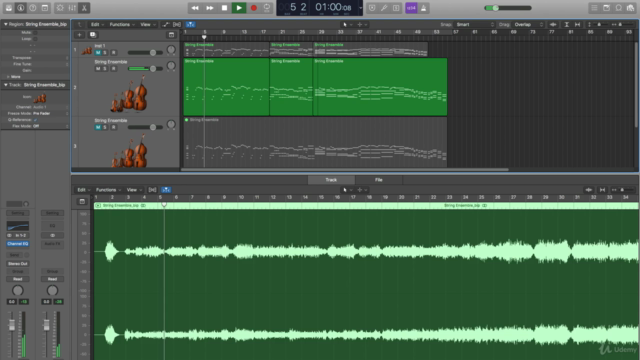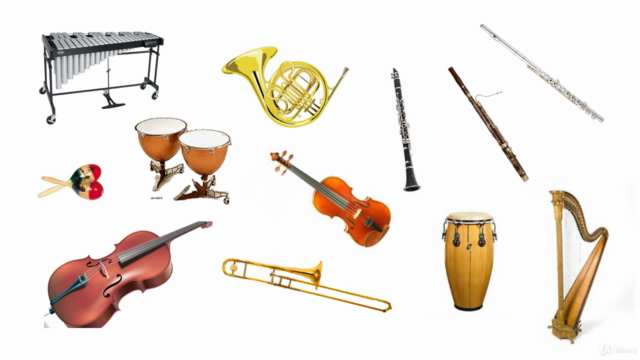Orchestration 1: Compose Orchestral Music for Strings

Why take this course?
🚀 Embark on Your Orchestral Journey with "Orchestration 1: Compose Orchestral Music for Strings"! 🎼
Are you ready to harness the epic sound of the orchestra in your compositions? If you've ever felt overwhelmed by the vast possibilities of orchestral writing, Orchestration 1 is here to guide you through every step of the process. 🌟
Why Learn Orchestration? 🤔
- Unlock the Full Potential: Discover how to utilize the full range of an orchestra's capabilities in your music.
- Crafted with Care: Learn the art of blending instruments and their techniques to create harmonious masterpieces.
- Expert Insights: Dive into the world of stringed instruments, their articulations, and the secrets behind their rich sound.
What You'll Master in This Course:
- 🎻 Understanding Instruments & Techniques: From violins to cellos, learn about the different string instruments and master their unique techniques.
- 🎶 Articulations & Soundscapes: Explore a wide array of articulations that will give your music depth and character.
- 🎭 Analyzing Masterworks: Study scores from the great composers to see theory in action and understand how these techniques can be applied in real-world scenarios.
- ✍️ Hands-On Learning: Compose your own piece for strings, applying all the knowledge you've gained throughout the course.
Course Breakdown:
- Fundamentals of Orchestration: Learn the basics and understand the significance of orchestration in music composition.
- Instrumentation Deep-Dive: Explore every articulation and technique for stringed instruments with real-life examples and audio samples.
- Analyzing Orchestral Scores: Examine iconic works from history to grasp the underlying concepts of orchestration.
- Practical Application: Compose a complete piece for strings, using an orchestrator's perspective to ensure your music comes alive.
By the end of this course series, you will be equipped to:
- 🎵 Comprehend the string family in detail.
- 🎶 Apply any string articulation and technique to your compositions.
- 🎺 Orchestrate for strings with confidence.
- 🎖 Expand your knowledge to include woodwinds, brass, and percussion.
Embark on Your Composing Adventure:
- Step-by-Step Guidance: Learn orchestration in a structured, easy-to-follow manner.
- Real-World Application: Compose for strings and learn to make your music resonate with the power of an orchestra.
- Become a Profilient Orchestrator: Transform your understanding of orchestral music composition and unleash your full creative potential.
Don't let the complexity of orchestration hold you back any longer! With "Orchestration 1: Compose Orchestral Music for Strings," you'll be on your way to becoming an orchestral music composer who knows how to wield the mighty forces of the orchestra with precision and flair. 🌟
Enroll now and start your journey towards mastering orchestration! Your next symphonic adventure awaits. 🚀🎫
Course Gallery




Loading charts...
Comidoc Review
Our Verdict
Orchestration 1: Compose Orchestral Music for Strings by Karleen Heong offers a detailed and well-structured approach to understanding string instruments and their applications in orchestral composition. While the course provides valuable insights, it's essential to be prepared for the speaker's fast pace and the occasional need to pause for better comprehension. The absence of subtitles or translation options may also impact non-English speakers' experience negatively. Overall, this is a recommended course for those looking to expand their understanding of string instruments in music composition.
What We Liked
- Comprehensive course covering string instruments' articulations, techniques, and orchestration
- Detailed explanations of instrument strengths, weaknesses, and limitations
- Well-structured curriculum, helpful for both beginners and experienced musicians
- Practical application through piano reduction exercises
Potential Drawbacks
- Lack of subtitles or translation options for non-English speakers
- Speaker's fast pace might make it challenging to follow along without pausing
- Limited practical examples in course projects
- Occasional broken links within the lectures